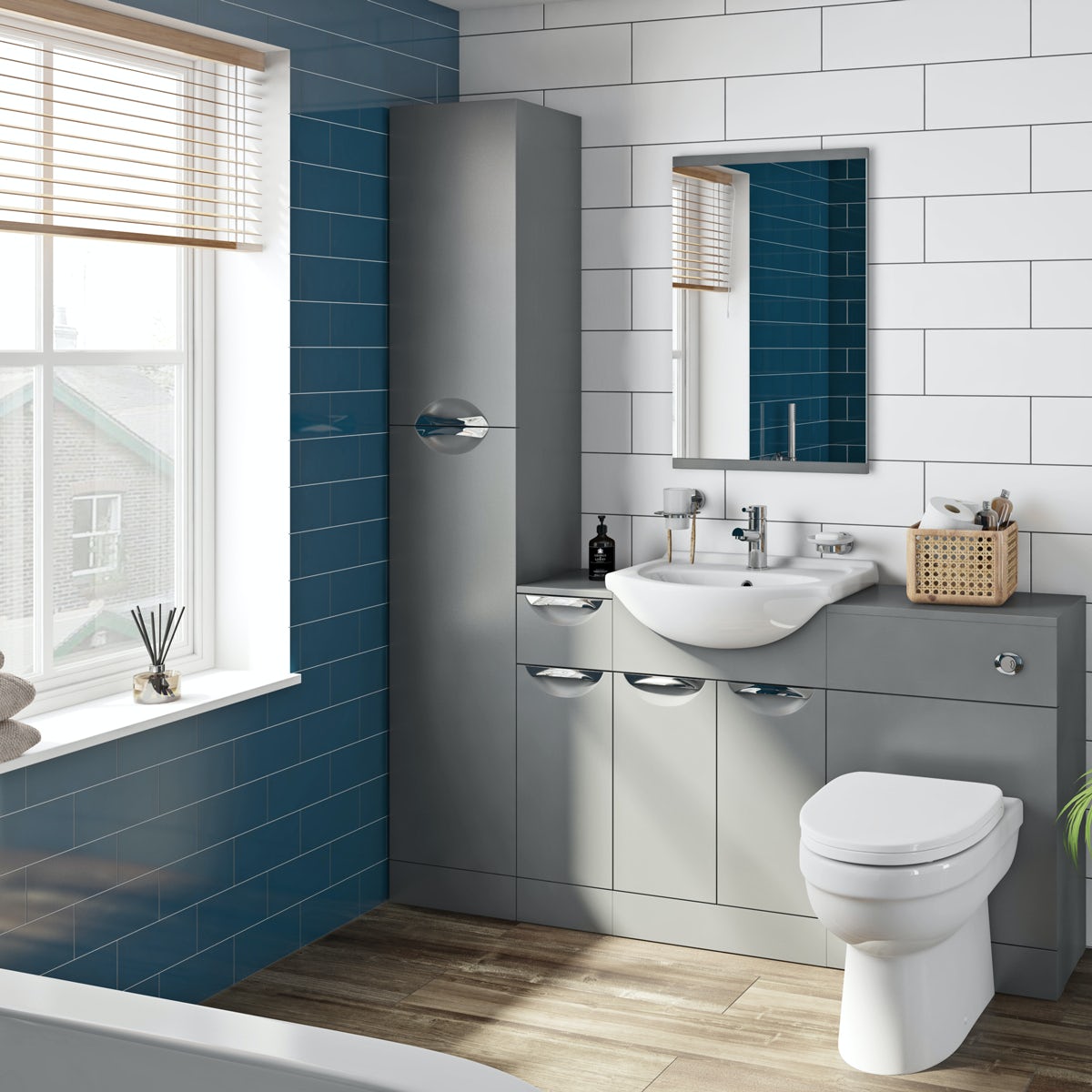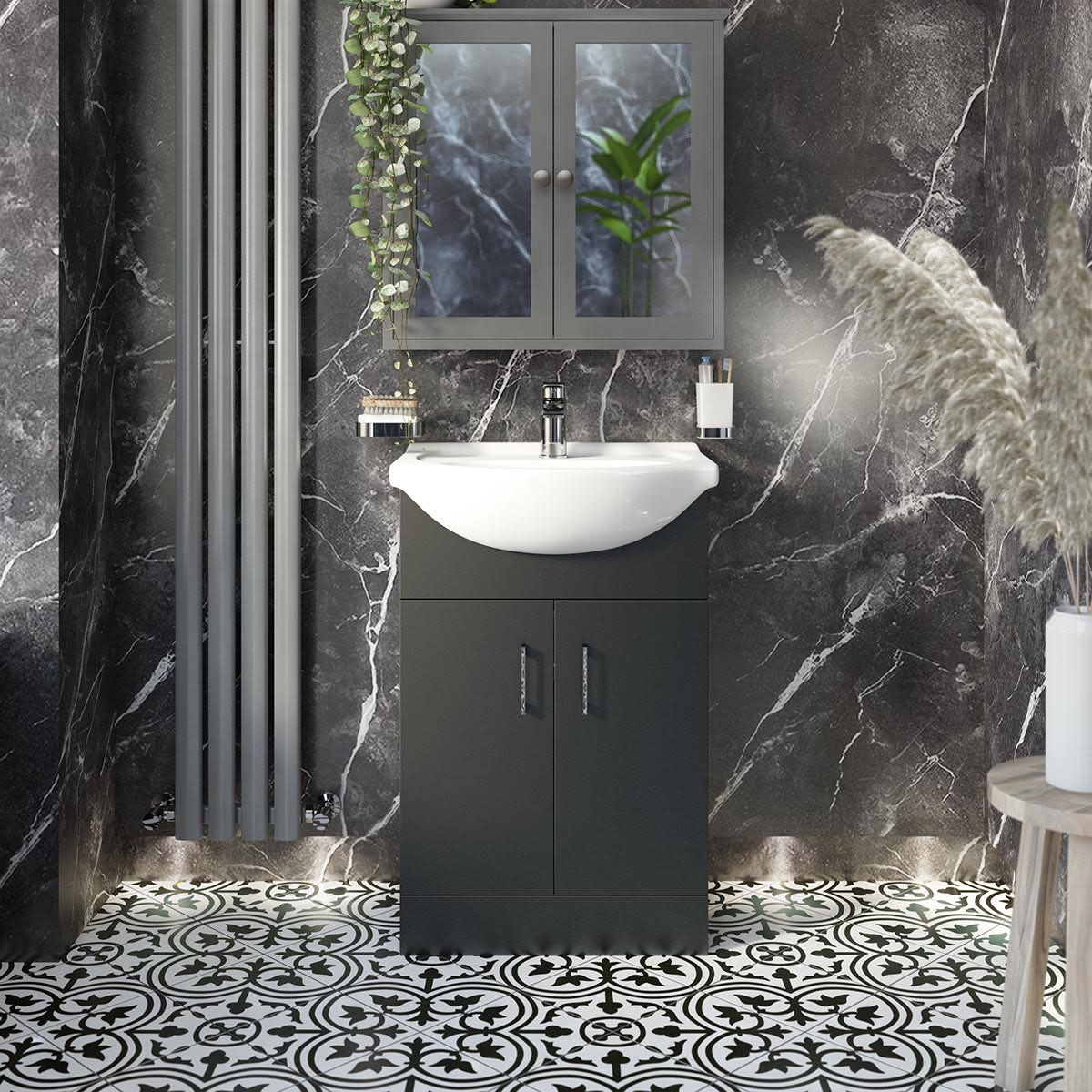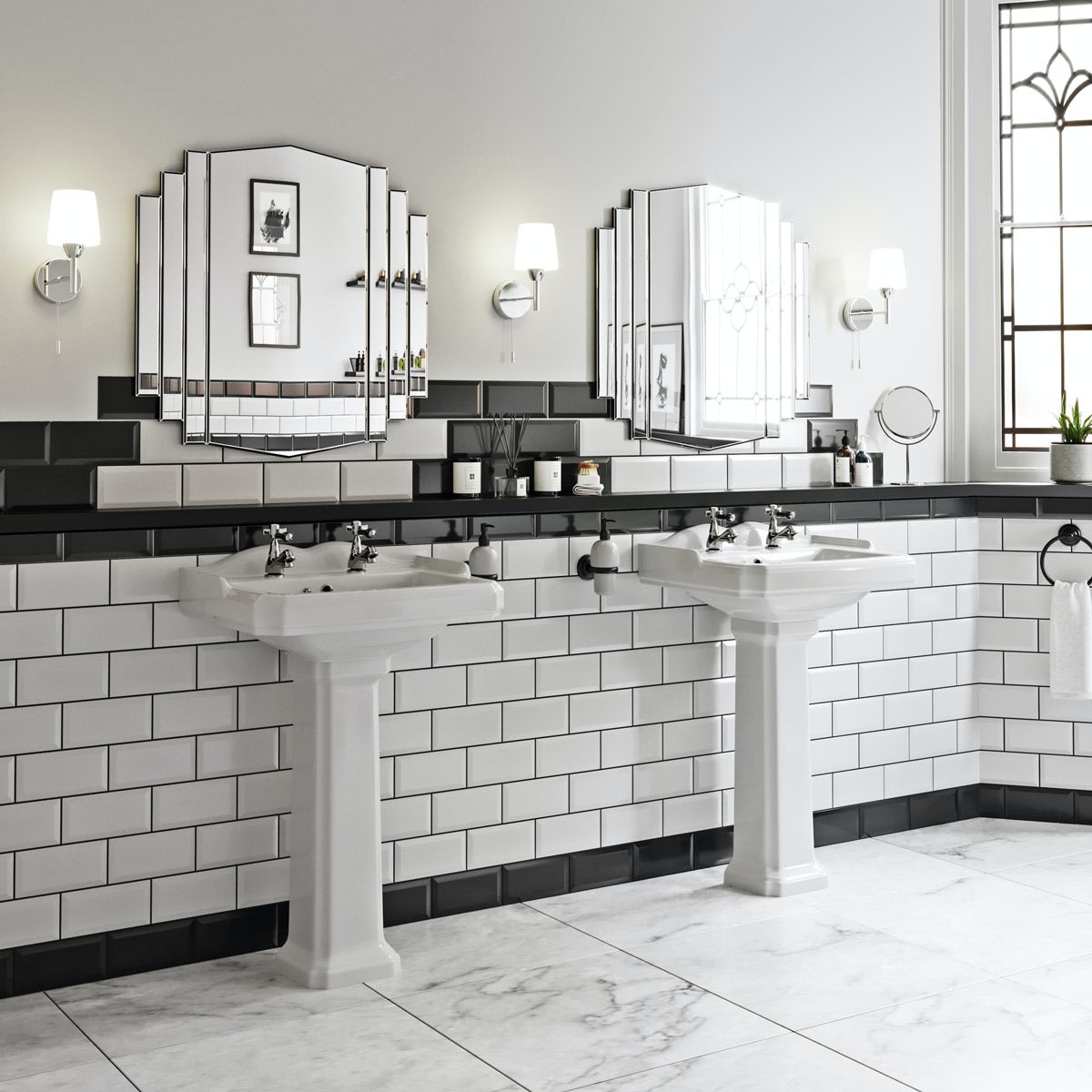It’s an all-too familiar situation: You find yourself standing in front of an annoying, hopelessly blocked toilet with no idea how to get rid of it. But fear not! Although a professional plumber may be able to provide the best solution, there are natural remedies that can help you quickly unblock your toilet in a jiffy. Here, we’ll provide you with all the info you need to learn how to unblock your toilet using natural remedies that won’t break the bank. Keep reading to find out how to unblock your toilet without calling a professional.
Quick Insight into Key Points
You can try using boiling water, dish soap, or vinegar and baking soda. For more stubborn clogs, you can rent a plumbing snake to break up the blockage.
Know When it’s Time to Unblock your Toilet
It can be difficult to determine when it’s time to unblock your toilet, since life’s little plumbing occasionally require a little extra help to get back on track. While some people might believe that waiting is the best approach – considering the mess and expense of a DIY project or a professional call-out – others may think that quick identification and action can avoid further issues.
For example, if there is visible waste in the toilet bowl or draining away slower than usual, acting quickly can save the problem from escalating and minimize any potential water damage. On the other hand, if you’ve recently used chemical cleaners or a plunger to do maintenance work but the problem persists, then it’s worthwhile considering recruiting some professional assistance before outcomes become more severe.
At the end of the day, only you know what’s best for your individual situation. Either way it’s important to comprehend how navigating any plumbing issue requires balance between activeness and caution. However, for those looking to take matters into their own hands by unblocking their toilets naturally, then it is worthwhile moving on to the next section which looks at identifying blockages in greater detail.
- According to a 2020 survey, baking soda and vinegar is the most commonly recommended method for unclogging a blocked toilet.
- In a study conducted in 2019, 69% of respondents found that plunging was an effective method for treating clogged toilets.
- A 2017 survey found that nearly 50% of respondents reported having used boiling water to unblock a clogged toilet with some success.
Identifying a Blockage
Identifying a blockage is the first step in quickly and effectively unblocking your toilet. The telltale sign of a clogged toilet is water that can’t pass through it, so it’s likely that if you haven’t been able to flush the toilet or noticed it filling up with more water than normal, you have a blockage. This could be caused by an object stuck in the pipes, such as a toy or sanitary product, or soap scum and sediment that has built up. If your toilet doesn’t drain completely after flushing, then it may also indicate there is a blockage.
It is not always clear whether a slow draining toiletwas caused by a blocked pipe or just needs more powerful flushing due to a build-up of materials in the pipe. For those who have stubborn clogs in their toilets, it might be necessary to investigate further using DIY methods or call an expert plumber for assistance. Even if you think that your plumbing system does not require hands-on cleaning, getting the drain checked regularly will help prevent major problems in the plumbing system over time.
Whether it’s DIY or professional assistance needed to identify and resolve the issue, recognizing the potential of a blocked toilet quickly is key to resolving any blockages before they become a major headache. After correctly identifying and locating the blockage, using a plunger can then be a fast and straightforward solution to unblock your toilet quickly.
Using the Plunger to Unblock the Toilet
Using a plunger as an effective unblocking tool is highly debatable. On one hand, plungers are widely available and easy to use, making them a potential life saver when dealing with common blockages. However, some are sceptical of the effectiveness of the plunger because the technique can be difficult to master and time consuming without great results.
To begin with, using a plunger to unblock a toilet is not difficult or expensive; it’s simply a matter of finding the right tool for the task. A standard rubber or plastic plunger fits snugly over most toilets and provides enough suction to loosen basic clogs. This makes it an affordable choice for many people since purchase price is minimal (about $10 or less). Furthermore, using a plunger does not require any additional tools or cleansers which may damage the plumbing system.
On the other hand, there are those who argue that plungers don’t always produce satisfactory results because they can be difficult to use correctly. As mentioned before, mastery of technique is key; sealing off the entire hole of the toilet from air and pushing down and up in one quick motion generates the necessary pressure needed for unclogging. Unfortunately, if this step isn’t done correctly, then you could end up wasting valuable time and energy and have nothing to show for it!
Whether or not using a plunger is worth it is ultimately up to personal preference, depending on resources available and expected results desired from such an endeavor. For those who decide to move forward with plunger use as their means for unblocking a toilet, it’s important to stop and take note of how much effort was put into trying various methods – this is vital information when assessing success and can go a long way in helping determine whether additional measures need to be taken in order to resolve the issue. With this in mind, next we will cover the best practices when it comes to using your plunger successfully.
Plunger Procedure for Unblocking a Toilet
When it comes to unblocking a toilet, the plunger is usually the first remedy that people turn to. This is because plungers are inexpensive and widely available. So how do you use a plunger to unblock your toilet? First, make sure you have the right type of plunger. Flat cup plungers are most effective for blocking toilets as they create an airtight seal on the drain. A bell or flange shaped plunger won’t be as effective as it requires an uneven surface for a proper seal to form.
Next, fill the toilet bowl with enough water that the rubber cup of the plunger can fully submerge. If there is too little water, some pressure will be lost and the blockage won’t be effectively removed. If there’s too much water in the bowl, consider scooping some out before proceeding. Now place your plunger over the drain and push down firmly then pull up quickly. Repeat this several times until you feel resistance as this will indicate that your blockage has been removed.
Once you’ve cleared your blockage, flush your toilet to ensure everything is running smoothly again. If your blockage isn’t cleared after multiple attempts with the plunger, consider trying other natural remedies such as vinegar or baking soda instead.
The effectiveness of a plunger really depends on whether or not it creates an airtight seal around the drain and if you’re using sufficient amounts of water in the bowl – with a bit of practice, anyone should be able to get their toilet unblocked with this procedure. While plungers certainly work great in draining standing water from a sink or bathtub, when it comes to clearing serious blockages from toilets they may not be an entirely reliable method – but they’re worth a try! With that being said, it might be useful to also consider other natural remedies for unblocking a toilet before taking more drastic measures – let’s take a look at what those are next.
Main Points to Remember
Plungers are the most common method of unblocking a toilet and should be the first remedy tried. When using a plunger, it is important to make sure you have a flat cup plunger which creates an airtight seal, fill the bowl with enough water to submerge the rubber cup of the plunger and push down firmly then pull up quickly multiple times until there is resistance. If this does not clear the blockage then other natural remedies such as vinegar or baking soda can be attempted. While plungers are effective in draining standing water, they may not provide reliable results when clearing serious blockages.
Other Natural Remedies to Consider
While some might attempt to continue and move on to more drastic methods for unblocking a toilet, it is worth considering other natural remedies first. One option is to use boiling water. Boiling water can help break down the blockage and aid you in unblocking a toilet without the need for extensive tools or harsh chemicals. Simply boil a pot of water and carefully pour it into the bowl. You should take caution when doing this because of the risk of potentially causing further damage to the pipes. Not all blockages will respond to boiling water alone, meaning that additional efforts could be required if the toilet remain blocked after pouring in boiling water.
Another potential natural remedy for unblocking a toilet is using baking soda and vinegar. This combination can be poured into the bowl and left to do its job as an effective form of homemade drain cleaner. The baking soda acts as an abrasive substance which helps break up blockages, coupled with the mild acidity from vinegar – resulting in an efficient solution for removing tough blockages without any specialist knowledge or tools. Both these remedies are entirely non-chemical, however, they do require patience and diligence to ensure optimum results are achieved without damaging your toilet system further.
Considering both of these natural remedies could save time and effort while still enabling your toilet to be quickly unblocked, but some extra thought must go into deciding which approach would be most beneficial depending on personal preference and how severe the blockage is. With this in mind, it is important to consider all available options before opting for chemical or cleaning products as solutions – which will be discussed in greater detail next.
Chemical and Cleaning Products
When it comes to unclogging a toilet, many people opt for chemical or cleaning products. While these types of products offer quick and often dramatic results, they raise a few issues that must be considered before implementing them.
On one hand, chemicals and cleaning products can easily dissolve blockages in a matter of minutes. These are often more effective than other methods such as plunging or using natural remedies, since it cuts through the build-up and breaks down large clogs. Certain brands may even prevent clogs from forming again in the near future by coatings the pipes and draining areas.
However, there is also a potential downside to using chemical toilets cleaners or drain openers. For one thing, they produce strong fumes, which can be an irritant when working in small areas like bathrooms. Furthermore, some of these products can contain hazardous chemicals that can be harmful if inhaled, ingested, or make contact with skin or eyes. Additionally, their ingredients might damage certain plumbing fixtures and not work on all types of blockages.
For these reasons, it’s important to carefully read the product labels for usage instructions and safety warnings before trying to use any chemical or cleaning product to unblock a toilet. Moreover, if possible only use them as a last resort after attempting other natural remedies such as hot water or baking soda.
Answers to Commonly Asked Questions
Are natural remedies for unblocking a toilet safe to use?
Yes, natural remedies for unblocking a toilet are safe to use. Natural remedies, such as boiling water and vinegar, are much safer than chemical drain cleaners when it comes to protecting the environment and your plumbing system. Boiling water is a natural cleaning agent that can break up blockages in the pipes, while vinegar dissolves grease and oil build-ups that might otherwise clog the pipe. All these solutions are considered non-toxic and non-corrosive, making them ideal for DIY plumbing jobs around the house.
How do natural remedies for unblocking a toilet compare to chemical solutions?
Natural remedies for unblocking a toilet differ from chemical solutions in that they are safer to use, produce fewer toxic fumes, and are more affordable. Natural remedies are generally made up of natural ingredients such as baking soda and vinegar that can disintegrate clogs effectively without the need for harsh chemicals. This makes them a safer choice, as the fumes created by chemical solutions can be damaging to both people and the environment. Furthermore, natural remedies tend to be more affordable than their chemical counterparts, making them an attractive option if you have limited budget.
Overall, natural remedies can be just as effective as chemical solutions at unblocking a toilet, but with added safety and cost benefits.
What materials are necessary for natural remedies for unblocking a toilet?
Natural remedies for unblocking a toilet can be done with materials you already have in your home! The most common materials necessary for natural remedies for unblocking a toilet include hot water, baking soda, dish soap, white vinegar, and borax.
Hot water can help to break down the clog by loosening debris that may be causing the blockage. Baking soda is a natural cleaning agent which helps to absorb odours and grease build-up which may be contributing to the clog. Dish soap works to create suds that loosen the grease and grime from the plumbing pipe walls reducing any build-up that is blocking them. White vinegar is acidic and helps to both dissolve small amounts of debris as well as cut-through standing water. Finally, borax is another commonly used cleaner for these types of blockages because it contains an active enzyme that helps breakdown waste within the pipe line.
All of these materials are easily accessible and inexpensive, making natural remedies an easy solution if you find yourself dealing with a blocked toilet.






